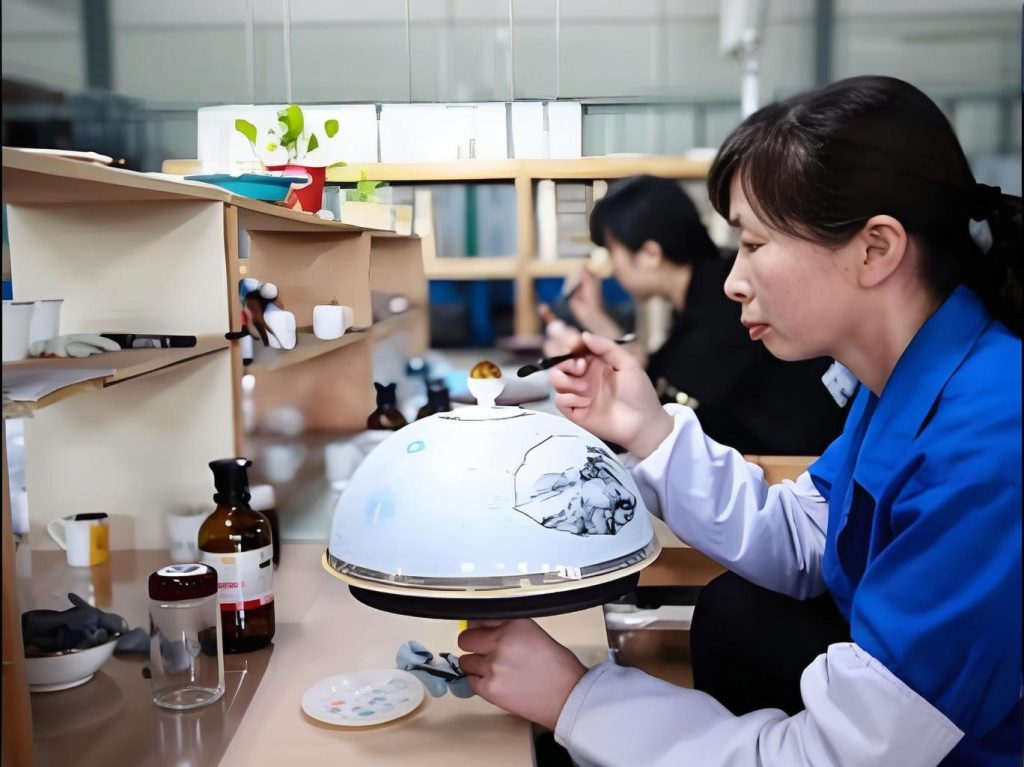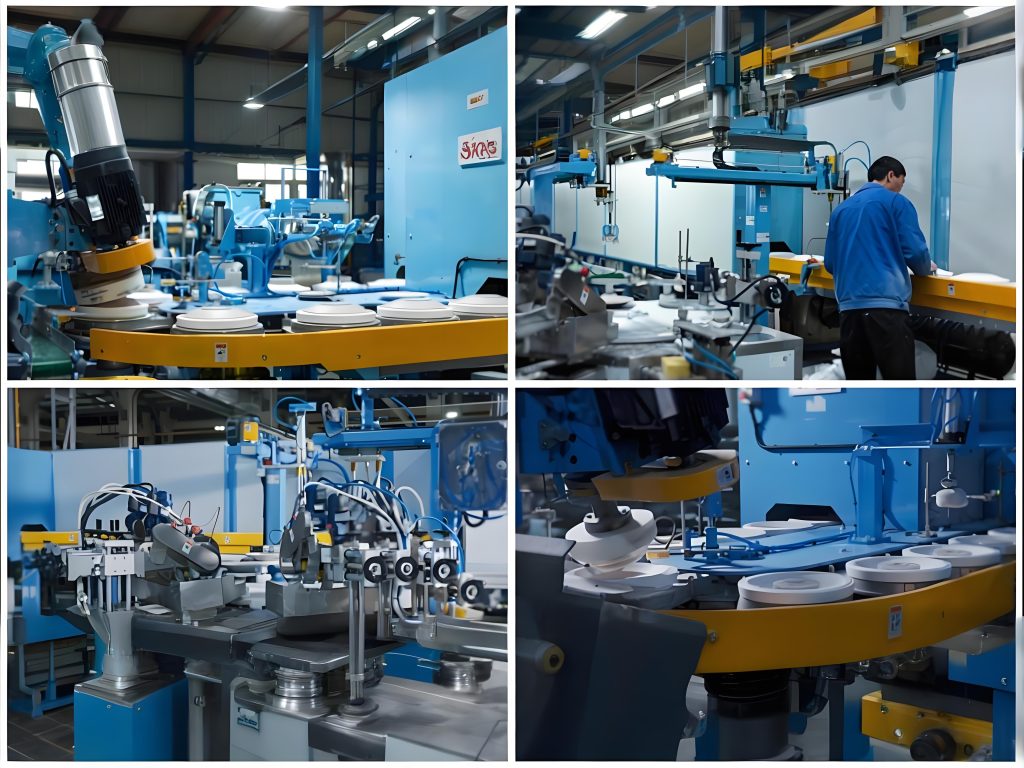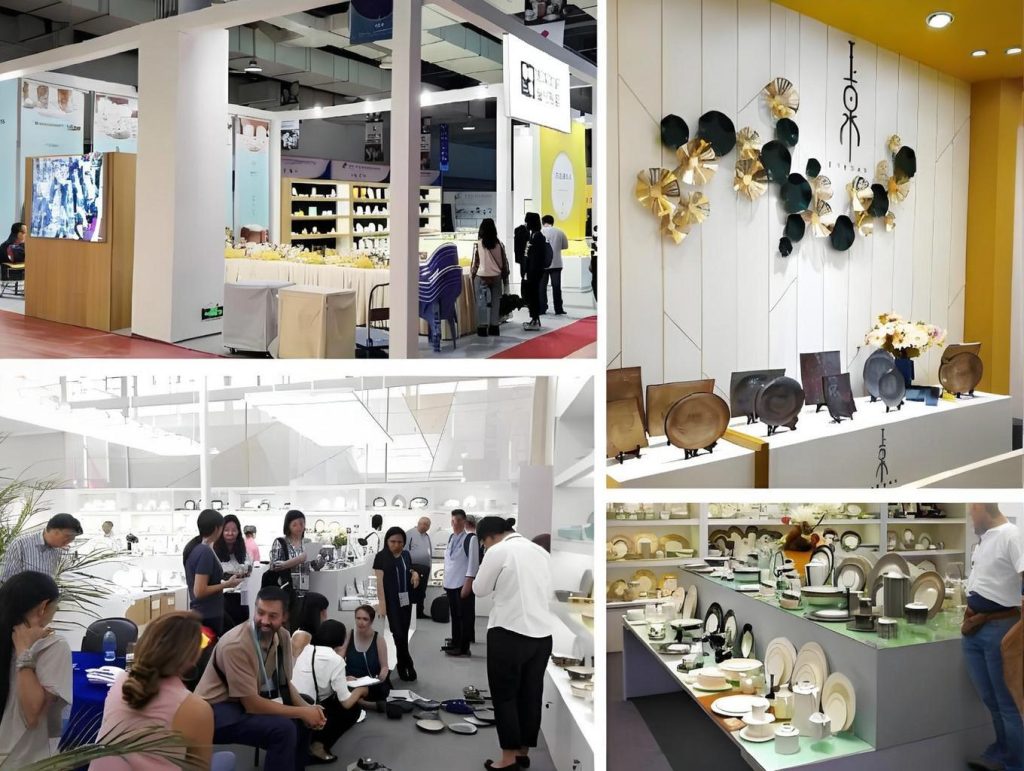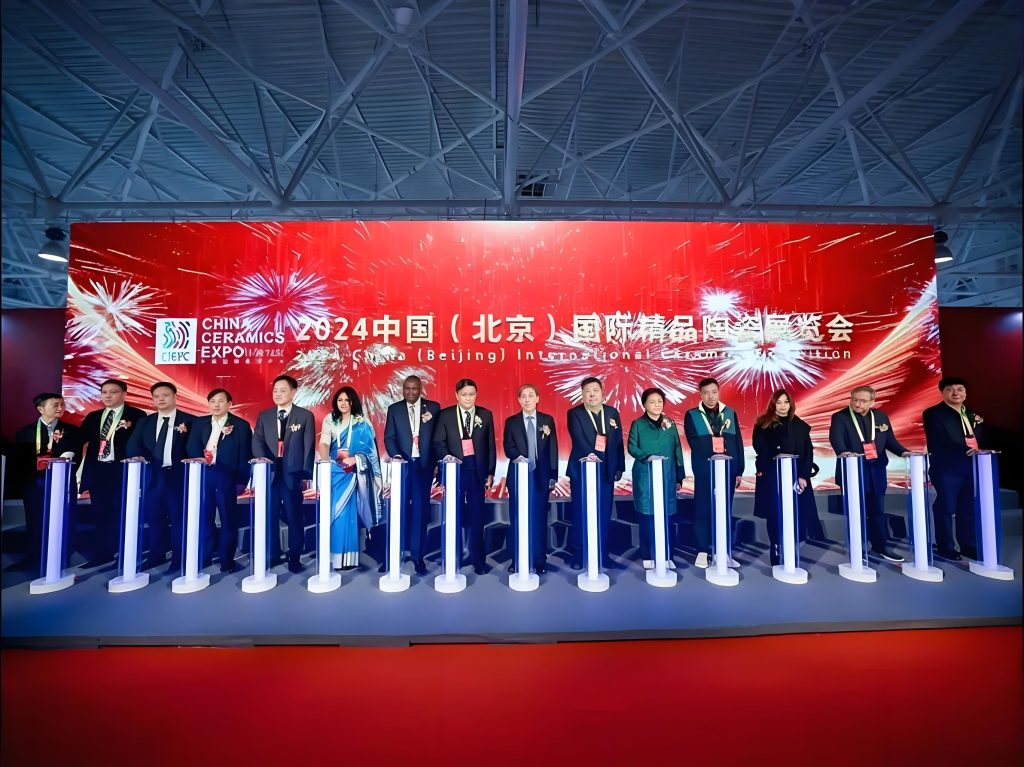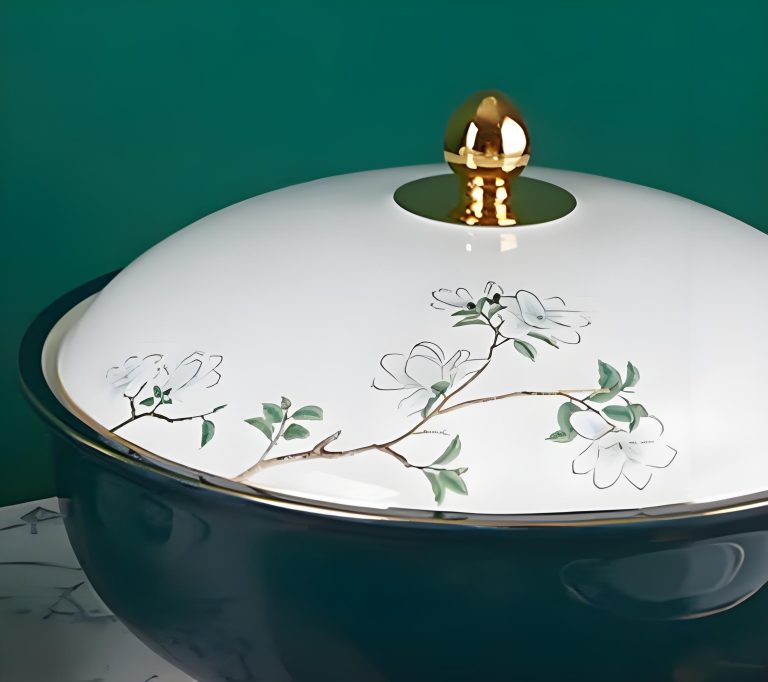When Co-Branded Ceramics Meet Tableware Manufacturers: A Battle Between “Beauty” and “Business”
Last Double Eleven, my friend scored limited-edition ceramic tableware on a luxury brand’s Tmall store. It was a Gucci collaboration with a century-old Italian ceramic workshop. She posted excitedly on social media: “Finally got tableware I can display in my living room!”
This made me wonder. Why are so many brands obsessed with co-branded ceramics these days?
Real Voices from Reddit: Collect or Use? That’s the Question
On Reddit’s r/Ceramics and r/DesignPorn, discussions about co-branded ceramics get pretty interesting.
One post went viral. The title was blunt: “I bought a Starbucks x local artist collaboration mug but I’m scared to drink coffee from it.” Comments split into two camps:
The Practical Squad:
- “Ceramics are meant to be used! Otherwise what’s the difference from plastic mannequins?”
- “I bought IKEA x Virgil Abloh collaboration plates. Use them daily. Small chips actually add character.”
The Collector Camp:
- “The value of limited editions lies in scarcity. Daily use means inevitable depreciation.”
- “I own an Hermès and Bernardaud tea set. Only take it out for photos…”
This dilemma reveals something deeper. Co-branded ceramics have dual identities. They’re functional tableware and collectible art pieces at the same time.
A Quora answer from an anonymous tableware manufacturer was more direct: “Brands want buzz and premium pricing. We manufacturers want technical showcase and orders. Consumers? They want social currency. That superior feeling when posting on social media.”
Pretty accurate. Co-branded ceramics are essentially a three-way win game.

The Manufacturer’s Perspective: Why “Stoop” to Collaborations?
On Quora, one question caught my eye. “Why do traditional ceramic factories partner with fast fashion brands? Aren’t they afraid of cheapening their image?”
A product manager from a European legacy tableware manufacturer gave three reasons:
1. A Stage for Technical Validation
“Collaboration projects often push us beyond conventions. Like achieving metallic textures on ceramic surfaces. Or creating gravity-defying shapes. These technical reserves can later be used in regular product lines.”
This reminded me of recent data. Compared to traditional white ceramics, glaze formula iterations for collaborations are three times faster. Brand demands for “visual differentiation” are extremely high.
2. Order Certainty
“Fashion brand collaborations usually mean limited releases. This means we can precisely control production volumes. No worries about inventory backlog. Plus their advance payment ratios far exceed traditional retailers.”
Not all manufacturers can handle large orders and risks. For small to medium ceramic factories, collaboration projects are “small but beautiful” business. Making 5,000 premium pieces beats producing 50,000 ordinary ones.
3. Added Value of Brand Endorsement
Once you become a collaboration partner for a famous brand, your own resume looks better. “We’ve worked with xxx” works wonders when negotiating the next client.
Brand Strategy: Co-Branded Ceramics as “Low-Cost Luxury”
A Reddit post hit hard: “Why can Supreme print on a bowl and sell it for 300 dollars?”
The answer is simple. Consumers need an “affordable entry-level luxury item.”
A luxury industry analyst on Quora nailed it:
“An LV bag might cost two months’ salary. But a collaboration ceramic set only needs two days’ wages. Consumers spend little money to post lifestyle content with brand logos on social media. That’s incredible value.”
Plus ceramics are perfect for collaborations:
- Controllable costs: Unlike clothing needing patterns, fabrics, multiple sizes, ceramic molds once made have minimal marginal costs.
- Strong visual impact: Print a logo or art pattern on a plate. Photo effects are immediate.
- Low repurchase rate: Tableware doesn’t go out of style like clothes or shoes. Buy once, use for years. Brands don’t cannibalize their own sales.
One stat tells the story. A certain international fashion brand’s ceramic collaboration spent only 15% of clothing line marketing. But achieved 60% of social media exposure. That math always works out.
Consumer Dilemma: Am I Paying for Ceramics or Just the Logo?
A highly upvoted Reddit rant: “I bought a Starbucks x Ban.do collaboration mug. Got home and saw ‘Made in China by a contract manufacturer’ printed on the bottom. Instantly felt like a sucker.”
Comments exploded:
- Some said: “You’re buying design and brand, not ceramic scarcity itself.”
- Others countered: “If it’s just slapping on a logo, why charge ten times more than regular mugs?”
This reminded me of a Quora question. “How do you tell if co-branded ceramics have real value or are just an IQ tax?”
A collector’s answer was practical:
Check three things:
- Collaboration partner tier: If it’s a top-tier tableware manufacturer (like Wedgwood, Royal Copenhagen), quality is guaranteed.
- Design irreproducibility: Can only this manufacturer create this effect? Or could any factory replicate it?
- Release volume: Global limited 500 sets versus mass-produced 50,000 units mean completely different things.
He added: “If you don’t dare use it after buying and just display it, you basically overpaid. Truly good co-branded ceramics make you both scared to break them and unable to resist using them daily.”
Industry Secrets: The “Unequal Treaties” Behind Collaborations
In a Quora industry gossip thread, a former tableware manufacturer sales director anonymously revealed:
“Many think collaborations are win-win. But actually manufacturers often hold weak positions. Brand parties demand:
- Complete design copyright ownership (we can’t use the same molds for other clients)
- Pathetically low profit-sharing ratios (sometimes only 15-20%)
- Strict NDAs (can’t publicly announce partnerships)
But we still do it. Because it’s the golden ticket into high-end markets.”
Similar discussions appeared on Reddit. Someone mentioned a trade show incident. A Japanese ceramic factory collaborated with a European designer. The designer unilaterally declared “this is my artistic creation.” Never mentioned the manufacturer’s name. The factory was angry but powerless. The contract had sealed everything.
This inequality reminded me of an old saying. In the business world, those with leverage define what “collaboration” truly means.
Future Trends: Where Are Co-Branded Ceramics Heading?
Recently on Reddit’s r/FuturistDesign, I saw a prediction. Future co-branded ceramics might not follow the “brand + manufacturer” model. Instead: “consumer + AI + manufacturer.”
Specifically:
- You select your favorite art style on an app (like Monet or Kusama Yayoi)
- AI generates unique patterns
- Directly connects with tableware manufacturers for small-batch customization (maybe just one set)
This C2M (Customer to Manufacturer) model is already being tested on niche platforms. A domestic brand called “Ceramic Laboratory” does similar work. Users upload photos or doodles. They directly fire them into tableware.
If this model matures, traditional “collaborations” might get redefined. No longer limited editions that big brands bestow on consumers. But exclusive editions everyone can own.
By then, social media posts might change. Not “I snagged xxx collaboration.” But “I designed this myself. Only one exists in the world.”
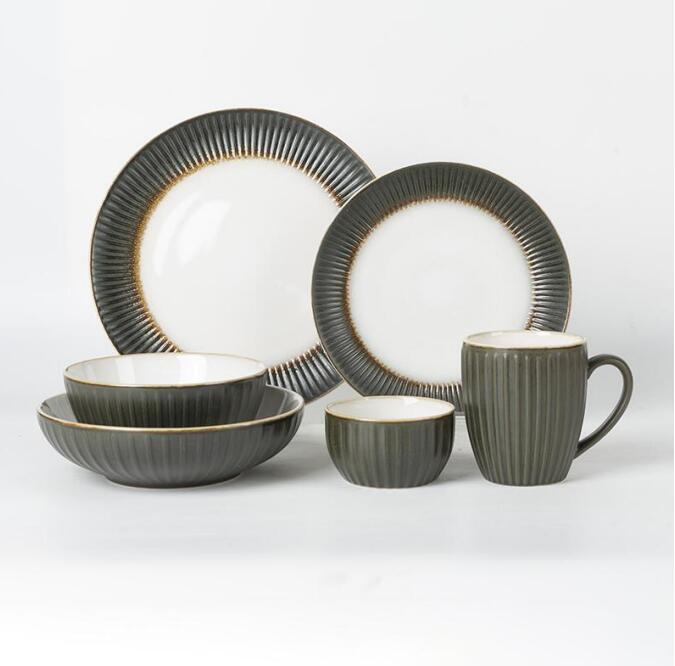
Final Thoughts: Ceramic Warmth Shouldn’t Be Defined Only by Logos
Back to the original question. Why are we obsessed with buying co-branded ceramics?
Maybe not because they’re actually much better than regular tableware. But because they satisfy our dual desires for “beauty” and “uniqueness.”
But let’s be real. When we pay hundreds extra for a logo, we should also think about those tableware manufacturer craftsmen. They’re the real magicians turning clay into art.
Before buying your next collaboration piece, ask yourself three questions:
- Do I genuinely like this design, or just want to own this brand?
- If it had no logo, would I still pay this price?
- Will I actually use it, or just photograph it for social media?
If you’ve thought through all three and still want to buy it? Go ahead. Life needs some ritual sense.
I just hope that someday we’ll remember manufacturer names more. Not just fashion brand logos.
If you have any questions or need to custom dinnerware service, please contact our Email:info@gcporcelain.com for the most thoughtful support!

